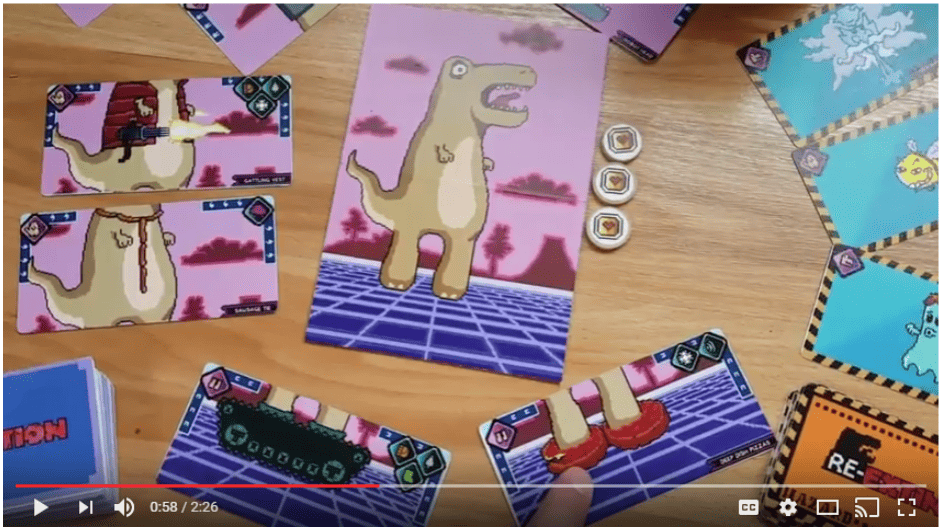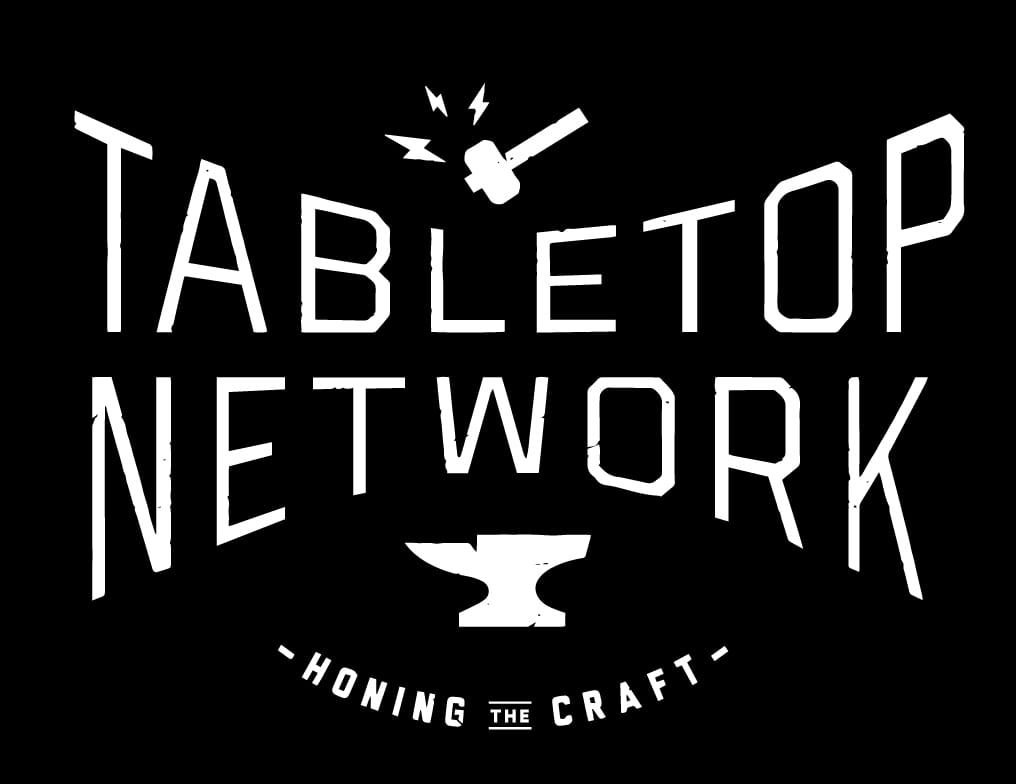
Guest author Tim Blank is a game designer from Boston, MA. He is the Vice President for the Boston Festival of Indie Games, New England’s largest indie game festival, where he runs the Tabletop Showcase, as well as the President of the Boston Game Maker’s Guild, the largest board game design group in New England. In addition to running the showcase for BostonFIG, Tim has been a judge for various other game design contests, including IndieCade and the Cardboard Edison award.
INTRO: BOSTON FESTIVAL OF INDIE GAMES
As a gamemaker, it’s hard to stay away from the convention scene. By far, they are the easiest and most efficient way to meet other designers and publishers, as well as build great relationships. Fortunately for us, conventions and festivals are also great ways to show off our new designs and bring us closer to our audiences, making them essential to the industry. However, conventions can be expensive, especially for small-budget game companies. Thankfully, the board game industry has built-in ways to help out the “little guys.” This is where Showcases and game design contests come in.
I am the Vice President of the Boston Festival of Indie Games, the largest indie game festival in New England. My position is to oversee the Tabletop Game Showcase. Each year, we’re flooded with entries from designers looking to get a chance to show at BostonFIG, and the process of narrowing them down isn’t easy. I use a team of over 50 volunteers each year to help with the process, but nonetheless, it can be cumbersome.
As a board game designer, at some point you will undoubtedly come across a game design contest or showcase. Not only do conventions and festivals hold them, but publishers and manufacturers are getting in on the action. These competitions can be a great way to get your name out there as a designer, as well as be good publicity for your game. But with a rapidly increasing number of entries each year, it’s becoming harder and harder to review the multitude of entries. This is where videos come in.
I asked several designers about the process of making a submission video, and my responses ranged from “It’s not that bad” to “They’re dreadful!” However, with a little know-how, making these videos can actually be enjoyable. They can certainly help you with your “elevator pitch” and will teach you the best ways to show off your game.
In writing this article, I’ve spoken to a number of other individuals who review contest entries and have come up with a few things we like to see when judging entries. Below are some of the most important things that we look for. [Editor’s Note: many of these same principles could be applied to making a video about your game to pitch to publishers.]
WHAT WE LOOK FOR IN GAME VIDEOS:
SHOW US YOUR GAME
This may seem obvious, but every year, we see about 5-6 videos of designers talking about their games, but don’t once see the actual game. The best way to show off your game is to actually show us the game! Let us see what it looks like when laid out on the table; show us how cards interact; when talking about components, let us see them in the context of the game. Remember, most of the people judging your game are designers themselves, so seeing everything laid out excites us and helps us better understand the game.
SHOW US YOU
One of the most important things that we look for is how the designer talks about their game. If you’re going to spend a few days showing off your game to our festival or convention audience, we want to make sure that you’re able to talk about it in a way that will engage our audience. Seeing you helps us build a more personal connection and being able to see how passionate you are will only make us more invested.
EXAMPLE: You’re Fired by Doug Levandowski – A great example of a designer talking about their game effectively. You’re Fired won “Most Dynamic Game” at BostonFIG 2016.
SHOW US WHAT IS UNIQUE ABOUT YOUR GAME
Suzanne Zinsli, one half of Cardboard Edison (a great design resource which does an annual prototype design contest) puts it best: “What makes [your game] stand out from the thousands of other games out there? What is going to make me want to play it? Tell my why your game is different.” This is often referred to as your “hook.” Game Designer Peter C. Hawyard, a judge for many game design contests, echoes this sentiment by saying “Whatever your game’s hook is – component, idea, theme – show it to me first. It’ll give me a reason to watch the rest of the video.” Unique games excite us and make us want to see more; and that’s exactly what you want from the judges.
EXAMPLE: eBee by Isabella Carlsson, Jeannie Choi, Celia Pearce, and Gillian Smith – A great example of a design team showing off the innovative aspect of their game. eBee won “Most Innovative” at BostonFIG 2016.
DON’T WORRY ABOUT VIDEO QUALITY
(But do make sure that we can see and hear everything clearly) – One of the biggest concerns that I hear from designers is that they don’t have professional quality video equipment and software. And my response is always “We don’t care!” And to be honest, we truly don’t. I’ve seen many games enter contests that were shot on webcams or cell phone cameras. Many of these have gone on to be accepted and win awards. Every contest I’ve been a part of has instructed judges not to judge video quality, and looking at scoring data, I can safely say that judges do stick to this. As game designers, we’re smart; so a flashy video won’t cover up a mediocre game. However, please be sure that your audio and video are clear enough that it doesn’t detract from the presentation.
EXAMPLE: Re-Extinction by Razlo Bailey – A great example of using a low-tech device (a cell phone camera), but still showing the game clearly and effectively.
CUT TO THE CHASE
Chris Zinsli, the other half of Cardboard Edison says “The best video submissions cut straight to the point. Tell us the basics right up front.” Most video submissions have a time limit, and 5 minutes is not as long as most people think! Show us your hook, the basic rules, your target audience, what mechanics are being used, and then show us a little bit of game play (use a voiceover here, if needed). Other interesting stories – such as your creation process or why you chose to make the game – should only be included if they’re necessary and if you have time. Don’t let these extra elements take away from actually showing us your game.
DON’T BE TOO VAGUE, BUT DON’T BE TOO DETAILED
Of everything here, this is likely the most difficult part of the video to get right – you’re finding a balance between being detailed enough to explain the game, but not getting lost in all of the specifics. Designer J.R. Honeycutt, who judges many of these contests, says “Can I quickly understand what is happening? … Are the most interesting things clearly demonstrated so that I can get excited about them?” A few pieces of advice for meeting this balance are:
- Don’t talk about your game too abstractly – Saying “it’s a post-apocalyptic co-op deck-builder” is great, but there are so many ways that description can be iterated. Give us more detail about how you’ve iterated it.
- Show us a typical turn in your game – This is the easiest way to help judges get a feel for your game. Just telling us the rules is fine (and many contests even ask for a copy of the rules), but showing us a turn makes it real.
Don’t show us odd interactions or exceptions to the rules – This goes back to point #4, planning what you’re going to say. Unless the interaction you’re showing us comes up often in the game, we don’t need to know all the little details of how Card A interacts with Ability B. Instead, choose a more basic interaction that still gives us a feel for the game without having to explain every rule.
EXAMPLE: Faulty Maps by Tim Armstrong – A great overall example of a submission video. Faulty Maps won “Best Game” at BostonFIG 2016.
HAVE SOMEONE ELSE LOOK AT YOUR VIDEO
This is perhaps the easiest thing that you can do prior to submission, but also one of the most useful. Grab a friend, ideally someone who is unfamiliar with your game (as the judges will be), who can give you feedback and tell you how they perceive your game. It’s easy to overlook rules or get too granular with details when you’re the project creator. A neutral third party can help you pick out problem spots and clear things up before you hit that submit button.
FINALLY, MAKE SURE TO BE YOURSELF
The game design world is full of interesting and creative people who have a passion for making games. Show us this passion and show us who you are. Gamemakers are a welcoming community and there’s a spot for everyone at our table.
PUT YOURSELF OUT THERE!
Submissions for BostonFIG open March 15, 2017 and will close April 15, 2017. For more information, please visit www.bostonfig.com.








